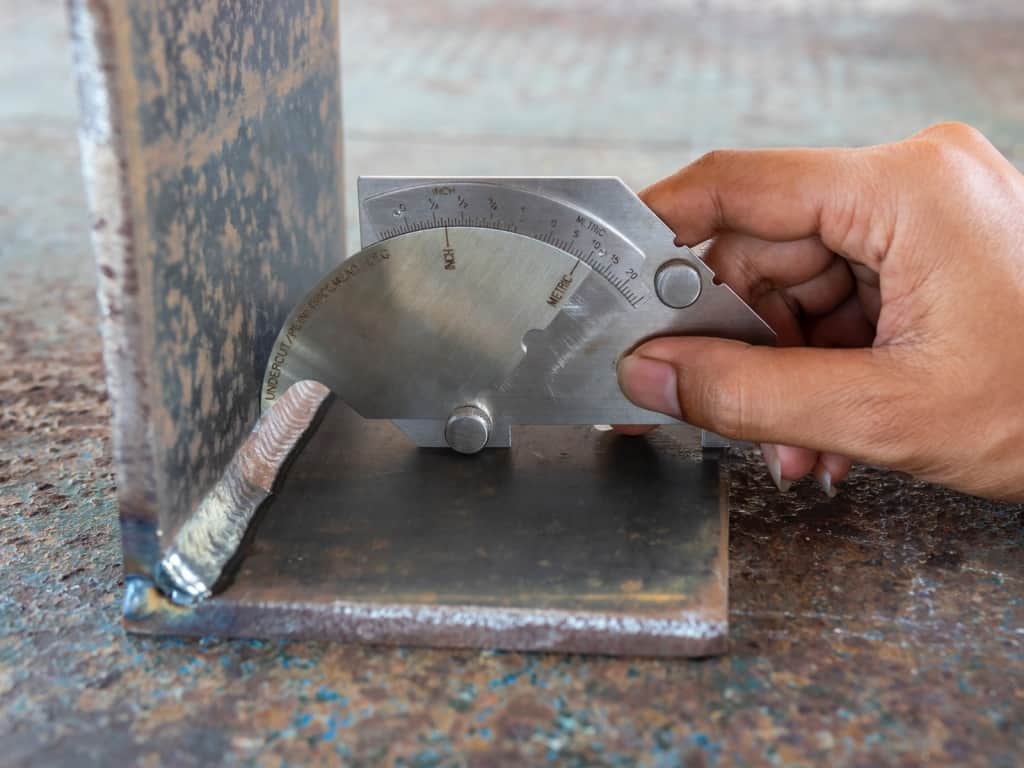Your Full Handbook to Preventing Weld Undercut Like a Pro
Your Full Handbook to Preventing Weld Undercut Like a Pro
Blog Article
Understanding the Art of Welding: Just How to Stay Clear Of Undercut Welding Issues for Flawless Manufacture Results
By understanding the origin triggers of undercut welding and implementing effective techniques to avoid it, welders can boost their craft to brand-new levels of excellence. In the search of remarkable construction results, mastering the art of welding to stay clear of undercut problems is not just an ability but a necessity for those striving for perfection in their job.
Understanding Undercut Welding

To stop undercut welding, welders should make certain proper welding specifications, such as readjusting the present, voltage, travel rate, and maintaining the right electrode angle. By understanding the causes of undercut welding and carrying out precautionary measures, welders can achieve top quality, structurally audio welds.
Sources Of Undercut in Welding
Understanding the aspects that contribute to damage in welding is necessary for welders to produce premium, structurally sound welds. Damaging takes place when the weld metal does not appropriately fill up the groove formed between the base steel and the formerly transferred weld metal. Several variables can lead to damage in welding. One usual cause is too much warmth input. Welding at high temperature levels for extensive periods can lead to the base metal thawing greater than desired, resulting in undercut. Poor welding wrong or present welding rate can additionally add to undercut. Inadequate current may not supply adequate heat to melt the base and filler steels adequately, while extreme rate can prevent correct combination, triggering undercut. In addition, improper electrode angles or wrong torch adjustment techniques can create locations of reduced weld metal deposition, promoting undercut. Comprehending these causes and implementing appropriate welding techniques can assist avoid damaging concerns, making certain resilient and strong welds.
Methods to stop Undercutting

To alleviate the risk of damaging in welding, welders can employ critical welding methods focused on boosting the quality and honesty of the weld joints. One reliable method is to change the welding specifications, such as voltage, existing, and take a trip rate, to make sure correct heat input and deposition. Maintaining a suitable electrode angle and guaranteeing consistent traveling rate can likewise assist protect against undercut. Furthermore, utilizing the proper welding method for the details joint setup, such as weave or stringer grains, can add to lowering damaging. Preventing weld undercut.
Utilizing back-step welding strategies and managing the weld bead account can additionally assist distribute heat uniformly and lessen the threat of undercut. Regular inspection of the weld joint during and after welding, as well as applying quality assurance steps, can help find out in dealing with and discovering undercutting problems quickly.
Significance of Proper Welding Specifications
Choosing and preserving appropriate welding parameters is necessary for achieving effective welds with marginal issues. Welding specifications describe variables such as voltage, current, travel speed, electrode angle, and securing gas flow rate that directly impact the welding procedure. These specifications have to be carefully readjusted based upon the type of material being welded, its thickness, and the welding method utilized.
Correct welding criteria make sure the correct amount of heat is applied to thaw check my site the base metals and filler material uniformly. If the parameters are established expensive, it can bring about excessive warmth input, causing burn-through, distortion, or spatter. On the various other hand, if the parameters are as well low, insufficient blend, lack of penetration, or damaging might take place.
Quality Control in Welding Procedures

Final Thought
Finally, grasping the art of welding requires a complete understanding of undercut welding, its causes, and strategies to stop it. By making certain proper welding specifications and implementing my website quality guarantee practices, remarkable manufacture results can be accomplished. It is essential for welders to continually pursue quality in their welding procedures to prevent undercut problems and create premium welds.
Undercut welding, a typical flaw in welding processes, happens when the weld steel doesn't effectively fill up the groove and leaves a groove or clinical depression along the bonded joint.To protect against undercut welding, welders need to guarantee proper welding criteria, such as changing the current, voltage, traveling rate, and keeping the right electrode angle. Insufficient welding incorrect or present welding speed can also add to damage.To mitigate the danger of damaging in welding, welders can utilize strategic welding methods intended at improving the high quality and stability of the weld joints.In verdict, understanding the art of welding calls for an extensive understanding of undercut welding, its reasons, and techniques to avoid it.
Report this page